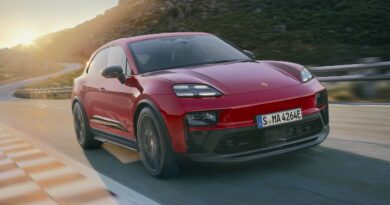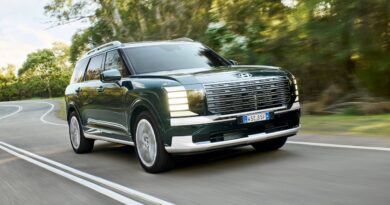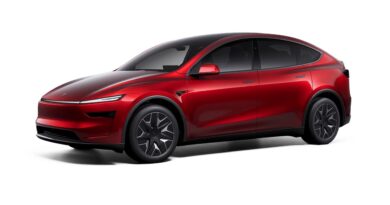Driven: Mercedes-AMG C63 S E Performance
Most plug-in hybrids – PHEVs – are marketed as almost-EVs. Making day-to-day driving a mostly electric experience for owners is the promise, while their internal-combustion engines – ICEs – provide freedom from charging anxiety, plus the ability to easily make long journeys.
The new Mercedes-AMG C63 S E Performance isn’t this sort of PHEV. The way to think of it is as a high-performance ICE car with a high-voltage life-support system. Due to arrive in Australia in July 2023, it’s likely to be priced around the $200,000 mark.
With CO2 and fuel-efficiency laws tightening in major world markets, senior AMG execs admit the company simply couldn’t do another C63 with a V8. At the same time, the company seems to believe its customers aren’t yet ready to wave goodbye to ICE power.
READ MORE: Mercedes-Benz AMG’s EV strategy revealed: from axial flux motors to ’63’ pace
READ MORE: ICE out as Mercedes-Benz plans all-electric range by 2030
So the new one has a turbo four-cylinder engine teamed with plug-in hybrid tech. It reduces consumption and emissions compared to the previous model, yet is also quicker.
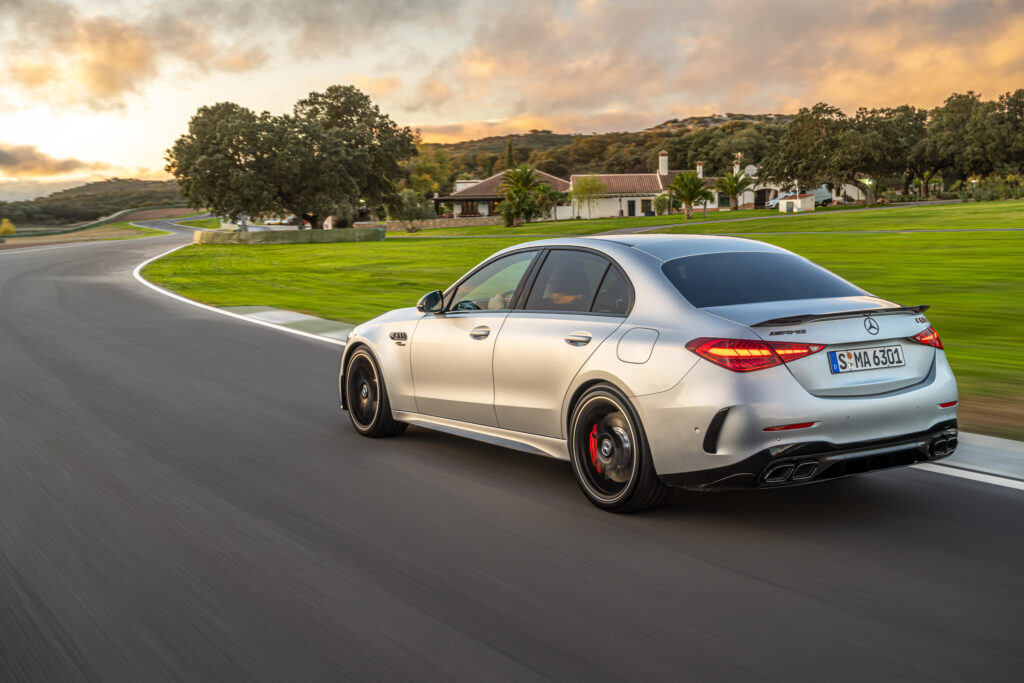
For the 15 years the C63 V8 has been in production, customers have loved the brash bellow from its exhaust pipes. If that had to disappear, AMG seems to have reasoned that the new C63 S E Performance should compensate with more power and speed than ever before.
Hybrid heavy hitter
The headline figures for the new C63 S E Performance are big, guaranteed to get the attention of even the most diehard V8 fan. Total system max power 500kW, max torque 1000Nm-plus, 0-100km/h 3.4 seconds.
That’s brisk, but BEVs such as the Tesla Model 3 Performance and upcoming Kia EV6 GT and Hyundai Ioniq 5 N can scamper to 100km/h in about the same time.
The ICE that’s part of the complex drivetrain is a 350kW turbocharged 2.0-litre that AMG says is the most powerful four-cylinder engine ever installed in a road car. Very impressive, but not a total surprise. AMG has something of a track record when it comes to hot fours.
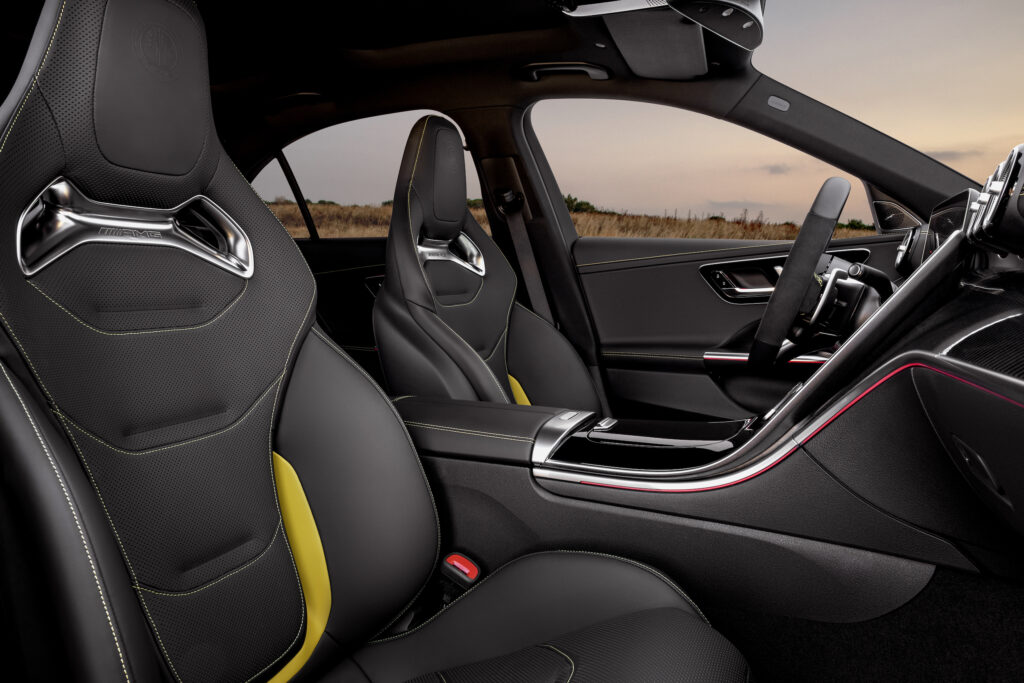
Its current A45 S hatchback and CLA45 S sedan pack a 310kW turbo 2.0-litre mounted crossways under their bonnets. Earlier this year Mercedes-AMG launched its new C43, with a new variant of the engine.
As well as modifications for north-south installation in a larger car, this 300kW unit replaces the standard turbo with a more responsive electrically-assisted compressor; like a turbo it thrusts air into the combustion chamber, but instead of relying on the exhaust pressure to make it spin it uses electricity, hence the faster response.
For the engine in the new C63 S they’ve gone a step further. Its electric ‘turbo’ is bigger again, sucking 400-volt power instead of the C43’s 48-volt supply. High-voltage power for the mega-turbo is available because the C63 S is a plug-in hybrid with a high-voltage battery.
The compact battery pack above the AMG’s rear axle can’t store a huge amount of electricity; a4.8kWh is the usable capacity. But it can put out a lot of power for a short time.
It draws on Formula 1 know-how, with a clever liquid cooling system that always keeps the battery cells in the fairly narrow temperature comfort zone for maximum power output and regenerative braking input.
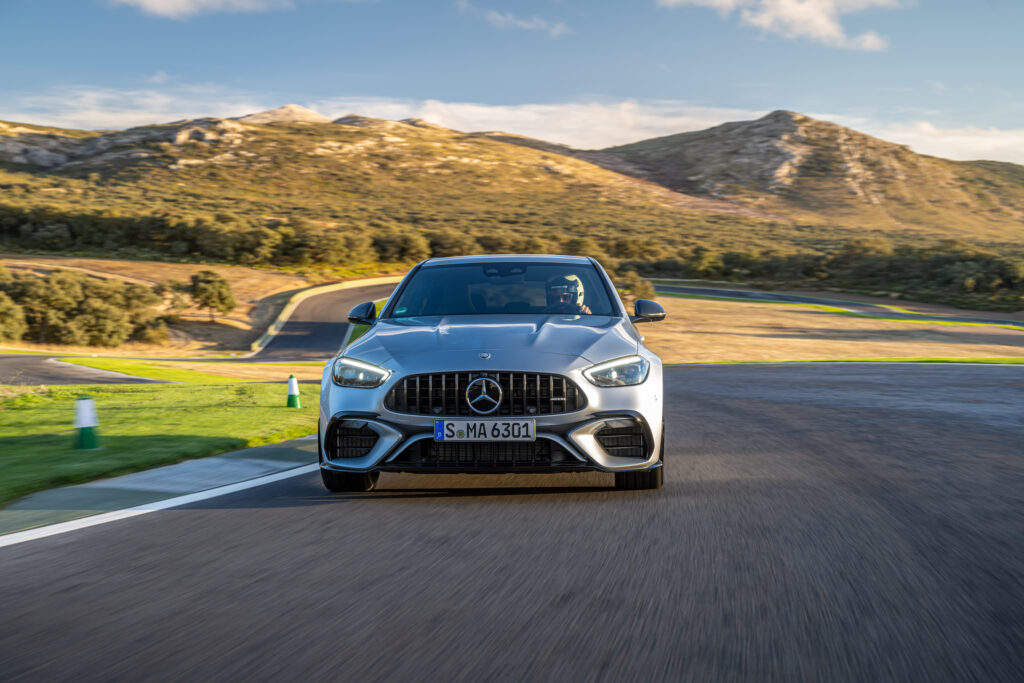
Built into the C63 S’s rear axle is an electric motor that can deliver a sustained 70kW or briefly add 150kW to the power total via an integrated two-speed transmission.
The e-motor/transmission unit and battery pack are exactly the same as those used in the bigger and much more costly Mercedes-AMG GT63 S E Performance, according to AMG engineers.
While there’s enough charge remaining in its battery pack the new C63 S can run on electricity alone. Though rear-mounted, the motor can power the front wheels if needed, using the car’s all-wheel drive system.
The AMG can also operate in hybrid mode, called Comfort, mixing or switching between engine and electric motor power, or in several high-performance modes, when its turbo four runs full-time.
There is also a Battery Hold mode, a Slippery mode for driving on ice and snow, plus an Individual mode for the driver to choose their own mix of preferred settings for the drivetrain, chassis control electronics, suspension, steering and exhaust.
In Individual, the driver can freely choose between the four modes of the AMG Dynamics menu. Normally these are linked to the driving mode selected. AMG Dynamics change the suspension stiffness and chassis control electronics in steps designed to suit everything from daily driving to racetrack hot-lapping.
Then there’s a choice of four levels of regenerative braking, though in Race mode it’s always Level 1. This makes the C63 S E Performance more predictable when driving really hard.
One more thing to mention is the haptic accelerator pedal. Near the end of its travel is a point of resistance to signal that pressing harder will engage Boost mode, which delivers the electric motor’s full 150kW.

Driving on circuits included in the downloadable library being built by AMG, its built-in Track Pace data-logging system can tell the driver where it’s smart to press for Boost.
The system flashes a message in the instrument display to go for Boost, and then starts a countdown timer to show how long to keep the pedal to the floor. The battery pack is small, but because it’s able to suck up the same 150kW from regenerative braking as it puts out to the motor, it’s never near empty for long.
The smart thing that AMG has done is analyse each of the circuits in its library to figure out exactly where using Boost will shave the most from the lap time. AMG is aims to build the library to eventually include 70 circuits worldwide. Currently it’s around 30, including two in Australia; Sydney Motorsport Park and Sandown in Melbourne.
Game to drive?
If you’re getting the impression the C63 S E Performance is more than a little like a sophisticated digital driving game, it’s no accident. AMG wants it that way…

The company believes the PHEV’s tech will attract a new type of customer to AMG. They’ll be turned on by its level of digital tunability, Jochen Hermann, the company’s chief technical officer, has said. That, and its speed and handling.
The C63 S E Performance is more extensively upgraded by AMG than any V8-powered C63 from the past. Compared with the regular C-Class it’s based on its wheelbase is lengthened, its axles widened and the body reinforced for greater stiffness. The brakes are much larger, too.
Many exterior panels are changed to clothe the new dimensions, and AMG’s nose and tail treatments add purposeful aggression to the greater visual bulk.
While the kerb weight of the new C63 S E Performance is close to 2.2 tonnes, the heavy hybrid hardware in its tail improves overall weight distribution.
Round the Spanish circuit AMG took over for the international media presentation of the car, the C63 S E Performance was wickedly quick. Its straight-line acceleration is relentless. In part this is because this is the first C63 with all-wheel drive, but the massive surge of the PHEV powertrain overcomes the car’s hefty mass with absolute ease. There’s no way a V8 C63 could keep up.

Though the drivetrain is hugely complex, it doesn’t seem weird from the driver’s seat. AMG’s engineers have stitched the interactions between the C63 S E Performance’s ICE, e-motor, transmission and all-wheel drive system so they’re simply seamless.
Its weight isn’t especially obvious when braking or cornering, either. It steers precisely, stops savagely and feels playfully agile. The V8 sound may be missing, replaced by a refined raspiness that’s less loud, but this is a better C63 to drive than any that have come before it.
And using the Boost mode guidance feature of Track Pace only added some exotic spice to the entertainment.
The new C63 S E Performance is also a superior road car. The suspension in Comfort mode is firm, but it’s much more absorbent than its V8 predecessors. Some of those were so stiff they would leave your kidneys feeling bruised.
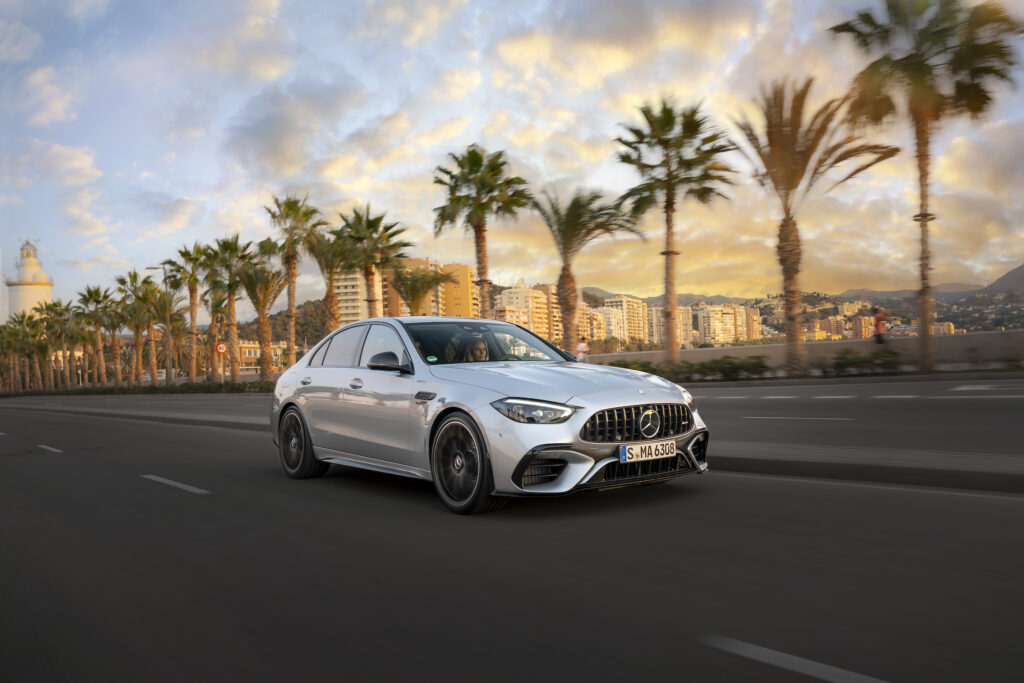
Being a PHEV, the AMG can be driven in Electric mode. Until the small battery pack is depleted, anyway. Performance is better than adequate for day-to-day driving, and the quietness is soothing.
The official WLTP-rated electric-only range is only 13km, with top speed limited to 125km/h. Nothing else about this car highlights so vividly its difference from other, run-of-the-mill PHEVs. It’s performance first, efficient electric driving a distant second.
Charging the C63 AMG
The small battery pack can be fully recharged in little over an hour, even though the maximum rate is only 3.7kW from an AC wallbox or public charger. It would be pointless, practically speaking, to have DC fast charging capability. So the AMG doesn’t have it.
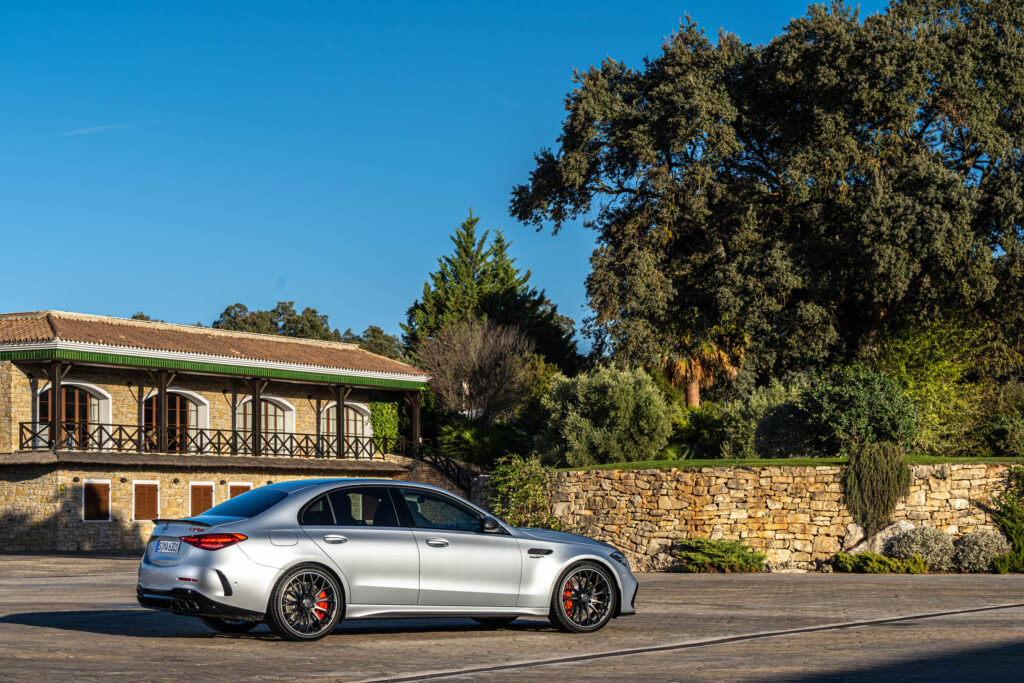
The wrap…
This AMG is a machine with a mission… to lure customers to the German brand with its blend of V8-crushing speed and digital-age sophistication.
On these terms is a brilliant success. It’s a quicker, calmer, more comfortable C63 that also creates new and interesting points of driver engagement.
Rather obviously, it lacks the ballistic V8 sound that was so appealing with the previous car. For many, that could be enough to send them shopping elsewhere.
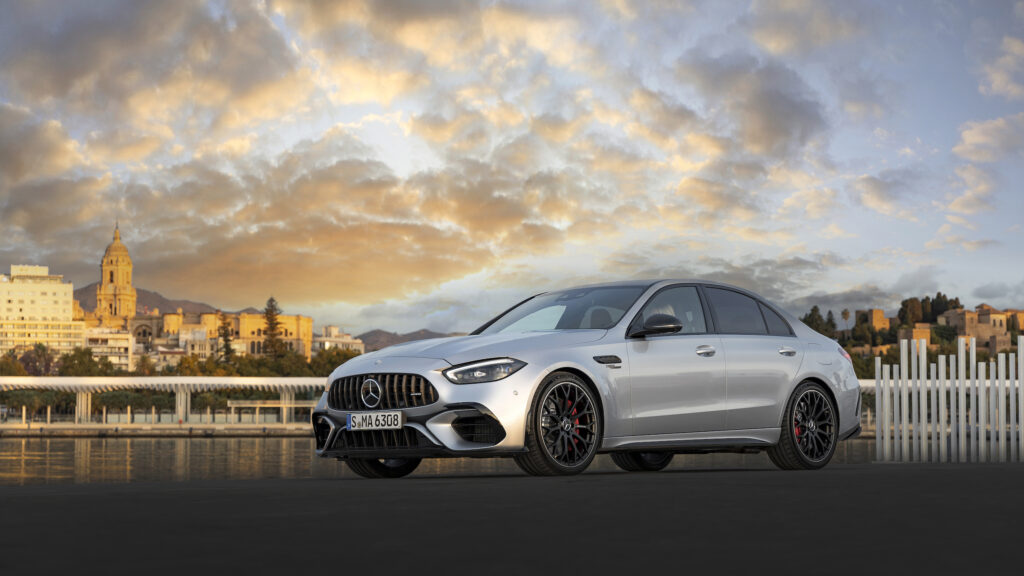
But there are efficiency gains… sort of. The improvement in efficiency it delivers compared to its loud-mouthed V8 forebears is only incremental. And the C63 S E Performance’s paltry electric driving range limits its potential to make a worthwhile environmental difference.
This Mercedes-AMG may be very mean, but it’s not very green…
Mercedes-AMG C63 S E Performance specifications
Price: $200,000 (est)
Basics: PHEV, 5 seats, 4 doors, sedan, AWD
EV Range: 13km WLTP
Battery capacity: 4.8kWh usable
Battery warranty: Unknown
Energy consumption: 6.9L/100km
Engine: 2.0-litre turbo in-line 4-cylinder, 350kW/545Nm
E-motor: 1 rear, 150kW/320Nm
AC charging: Type 2 plug, 3.7kW
DC charging: None
0-100km/h: 3.4 seconds (claimed)

